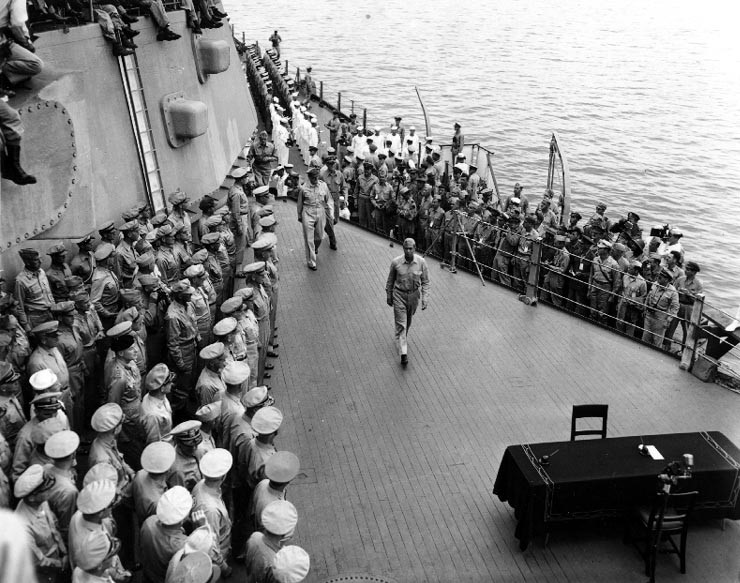

The Germans sailed straight for the Steamship Pier to unload troops, and Norge opened fire. The Norge’s skipper was not sure if the two oncoming destroyers were British or German, so he held his fire for a few minutes. With one coast defense vessel down, the other one was next. Three swam to safety, while the others were picked up by the Germans. It sank within 15 seconds, and only six men of its crew of 181 were saved. The explosion blasted the ship into two pieces. Bonte chose not to wait and fired four torpedoes at the oncoming Norwegian, which hit along her port side and set off the ammunition magazines. The German orders were to fire only if fired upon by the Norwegians, but the Eidsvold had more powerful guns than the Heidkamp. The German officer returned to his ship, and the Eidsvold squared off against the destroyer Wilhelm Heidkamp, flagship of the German force. The Norwegians were unimpressed and told the Germans they had orders to fire on the German destroyers. Bonte tried to negotiate his way past, sending over an officer to the Norwegian ship to tell them the Germans had come as friends to defend Norwegian neutrality against the British. As they neared the harbor entrance at 4:15 am, the Eidsvold popped out of a snow squall and challenged the invaders. While the mountain troops grabbed Norwegian positions, three destroyers of Bonte’s 1st Flotilla streaked in on Narvik and the two coast defense ships themselves. But the Germans moved faster than the Norwegians, their ships fanning out through the fjord, unloading detachments of German troops at machine-gun nests and coastal batteries and seizing them before the surprised defenders could open fire. Norway’s primary naval defenses-two ancient coast defense warships named Norge and Eidsvold, both 40-year-old tubs armed with 8.3-inch guns-prepared to sail.

A Norwegian patrol vessel reported foreign warships entering the fjord. Task Force 1 entered Ofotfjord at 3:10 am on April 9. Weather conditions improved as the tin cans reached the Lofoten Islands. The war started at Narvik in the early morning hours of April 9, 1940, with the destroyers steaming up Vestfjord in a northwest gale under total darkness and relying on dead reckoning, a tough navigational feat. The port lay at the base of the lengthy Ofotfjord, surrounded by craggy Norwegian mountains and conifers. Narvik itself was a tough cookie to seize. The Germans believed from the Norwegian traitor Vidkun Quisling that the Norwegians were ready to surrender and that the defenders were reportedly pro-German. The German plan to take Narvik depended on force and guile. The ground troops jammed on the destroyers came from the 139th Mountain Regiment of the 3rd Mountain Division, a tough force of 2,000 Austrians. The German destroyers were modern vessels, all launched between 19, well equipped with five 5-inch guns, four 37mm antiaircraft guns, and eight 21-inch torpedo tubes. The farthest one was Narvik, the target for the 139th Mountain Infantry and the 10 destroyers of Commodore Erich Bonte’s Task Group 1, organized into three flotillas. The Germans landed their troops at Norway’s ports first. The fact that Norway was an ardent neutral meant little to the great powers and their plans.īoth sides planned to violate Norway’s neutrality, the British by mining her waters and then landing troops at Narvik to cut the rail and sea line, the Germans by landing troops at key ports the length of Norway. Grand Admiral Erich Raeder, who commanded the Kriegsmarine, saw in Norway’s vast coastline an opportunity to provide his ships with bases on the Atlantic and to prevent the British from repeating the deadly blockade of 1914-1918. The British wanted to shut down the route in order to cripple Germany’s economy, while the Germans needed to secure it.Īt the same time, the German Navy, despite its small size, had great dreams. The all-weather port was the route by which Germany received vast supplies of Swedish iron ore. Norway in general and Narvik in particular had been central to Allied and German strategic planning since the outbreak of war. Instead, the Germans were about to face their first large-scale naval action since Jutland, and a massive defeat. Now all the German destroyers and the tough men of General Edouard Dietl’s mountain troops were taking on fuel, ready to return to Germany and prepare for new victories. Without suffering the loss of a single soldier or sailor, the German Army and Navy had sailed 1,500 miles through waters dominated by the British Royal Navy and captured Narvik without firing a shot, bagged nearly 500 Norwegian soldiers, seized one of Norway’s major military depots, and even taken five armed British merchant ships and their crews.


 0 kommentar(er)
0 kommentar(er)
